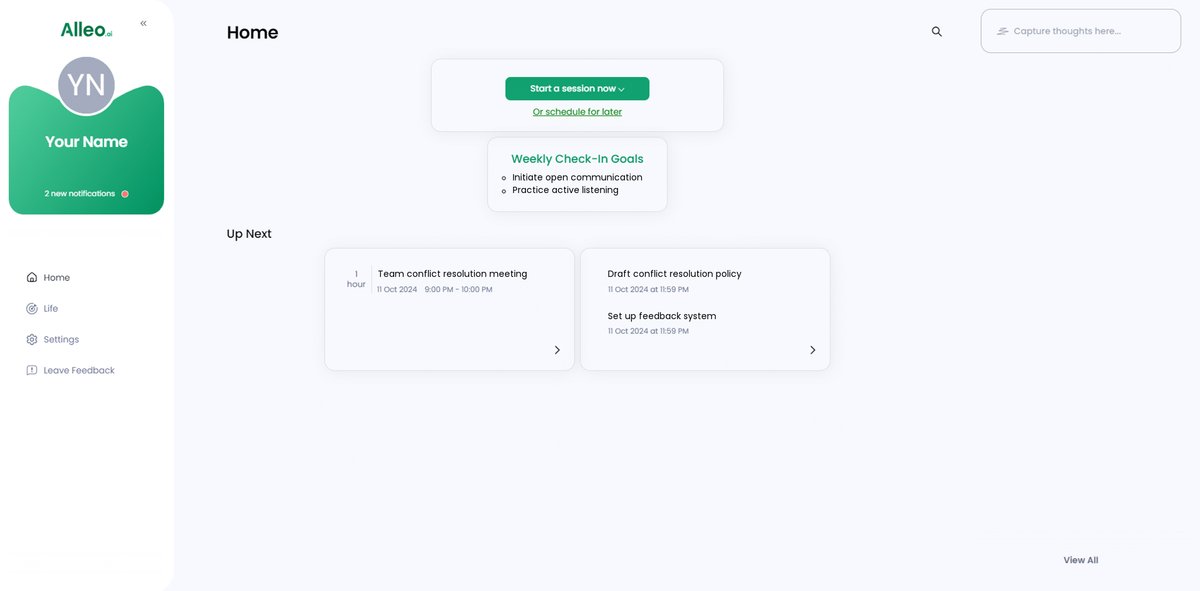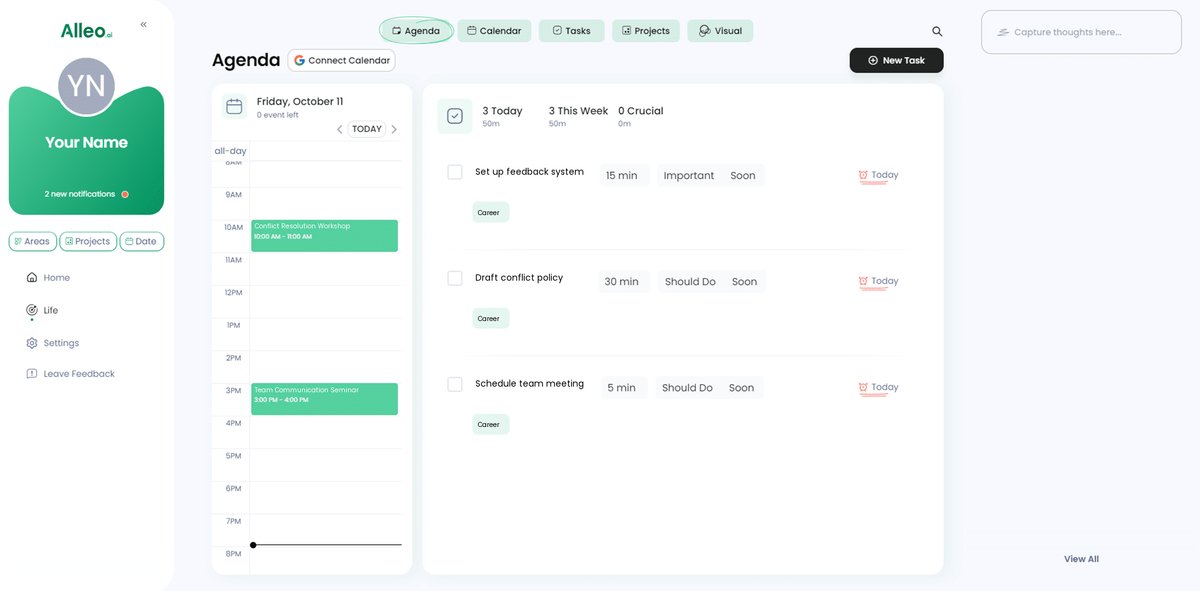How to Mediate Complex Office Conflicts: The Ultimate Manager’s Guide
Have you ever found yourself in the middle of a heated dispute between colleagues, unsure of how to effectively mediate workplace conflicts?
As a life coach, I’ve guided many professionals through the maze of workplace conflicts. In my experience, mediating disputes, especially in high-stress environments like law firms, requires a strategic and empathetic approach to conflict management strategies for leaders.
In this article, you’ll learn practical workplace dispute resolution techniques for mediating complex office conflicts effectively. We’ll cover techniques for fostering open communication, employing active listening, and developing collaborative conflict resolution plans to improve team dynamics and conflict resolution.
Let’s dive in.

The Pain and Complexity of Office Conflicts
Navigating workplace conflicts is no small feat, particularly when multiple parties and complex interpersonal dynamics are involved. Many clients initially struggle with the high-stress environments, tight deadlines, and strong personalities typical in law firms. Mediating workplace conflicts effectively becomes crucial in these situations.
In my experience, people often find that these factors amplify misunderstandings and disagreements. For example, a disagreement between partners over case strategies can quickly escalate if not addressed promptly. Workplace dispute resolution techniques are essential for preventing such escalation of office disagreements.
These conflicts are not only stressful but can also significantly impact productivity and morale. Team dynamics and conflict resolution play a vital role in maintaining a healthy work environment.
Without effective conflict resolution, unresolved issues can lead to decreased job satisfaction and even higher turnover rates. Understanding how to manage these disputes is crucial for maintaining a harmonious and efficient workplace. Developing communication skills for managers and employing emotional intelligence in conflict management are key components of mediating workplace conflicts effectively.

Strategic Steps to Mediate Complex Office Conflicts
Overcoming this challenge requires a few key steps. Here are the main areas to focus on when mediating workplace conflicts effectively:
- Facilitate open communication between parties: Regular team meetings and anonymous feedback systems can foster transparency and improve team dynamics and conflict resolution.
- Employ active listening and neutral perspective: Practice active listening and appoint a neutral mediator to facilitate discussions, enhancing communication skills for managers in workplace dispute resolution techniques.
- Develop collaborative conflict resolution plan: Create a conflict management strategy for leaders and set up a committee to manage disputes, incorporating employee mediation best practices.
Let’s dive into these interpersonal conflict in the workplace solutions!
1: Facilitate open communication between parties
Encouraging open communication is crucial for mediating workplace conflicts effectively and fostering a collaborative environment.
Actionable Steps:
- Organize regular team meetings to discuss ongoing issues and encourage open dialogue. Set specific agendas for these meetings to ensure all voices are heard, promoting team dynamics and conflict resolution.
- Implement anonymous feedback systems to allow employees to voice their concerns confidentially. Use tools like suggestion boxes or online platforms for submissions, supporting workplace dispute resolution techniques.
- Conduct conflict resolution training workshops to improve communication skills for managers. Schedule periodic workshops focusing on communication techniques and conflict management strategies for leaders.
Explanation: These steps matter because they create a transparent and inclusive environment where issues can be addressed promptly, effectively mediating workplace conflicts.
Regular team meetings and anonymous feedback systems help ensure that all team members feel heard and valued, addressing interpersonal conflict in the workplace. According to the Harvard PON, fostering open communication is essential for effective conflict resolution.
Conducting training workshops further equips employees with the skills needed to handle disputes constructively, enhancing employee mediation best practices.
These efforts lay the groundwork for a healthier workplace culture, setting the stage for more collaborative and productive interactions while preventing escalation of office disagreements.
Key benefits of open communication in conflict resolution:
- Builds trust and transparency among team members
- Identifies issues early before they escalate, supporting HR’s role in workplace conflict mediation
- Promotes a culture of continuous improvement and enhances emotional intelligence in conflict management

2: Employ active listening and neutral perspective
When mediating workplace conflicts effectively, employing active listening and maintaining a neutral perspective are essential for workplace dispute resolution techniques.
Actionable Steps:
- Practice active listening techniques during conflict resolution sessions. Focus on understanding the speaker’s perspective without interrupting. Paraphrase and summarize to ensure clarity, enhancing communication skills for managers.
- Appoint a neutral mediator to facilitate discussions between conflicting parties. Choose someone impartial and trained in mediation techniques. Ensure the mediator helps both parties articulate their concerns and work towards a mutually acceptable solution, following employee mediation best practices.
- Encourage reflection and self-awareness among team members. Provide resources or workshops on self-awareness and emotional intelligence in conflict management. Promote self-reflection to help individuals understand their own behaviors and their impact on others, improving team dynamics and conflict resolution.
Explanation: These steps matter because active listening and neutral facilitation enable a deeper understanding of each party’s perspective, fostering a collaborative environment and preventing escalation of office disagreements.
According to Alice Shikina, effective conflict resolution involves understanding the root issue and communicating effectively to resolve it. This approach reduces misunderstandings and builds trust, essential for a harmonious workplace and addressing interpersonal conflict in the workplace.
Utilizing these strategies helps create a constructive dialogue, paving the way for mediating workplace conflicts effectively and better team relationships.

3: Develop collaborative conflict resolution plan
Creating a comprehensive conflict resolution plan is vital for mediating workplace conflicts effectively and ensuring a harmonious workplace.
Actionable Steps:
- Create a conflict resolution policy that outlines steps and procedures for addressing disputes. Develop clear guidelines on how conflicts should be reported and managed. Ensure all employees are aware of the policy and understand the procedures for workplace dispute resolution techniques.
- Set up a conflict resolution committee to oversee and manage disputes. Form a committee with representatives from different departments to ensure diverse perspectives. Assign the committee the responsibility of reviewing conflicts and proposing solutions, focusing on team dynamics and conflict resolution.
Explanation: These steps matter because having a structured plan ensures that conflicts are managed consistently and fairly, which is crucial for mediating workplace conflicts effectively.
According to the CIPD, clear policies and protocols for conflict resolution help in handling conflicts effectively. This approach promotes transparency and accountability, which are essential for a stable work environment and for preventing escalation of office disagreements.
Implementing these strategies fosters a culture of fairness and collaboration, reducing the likelihood of unresolved disputes affecting productivity. It also enhances communication skills for managers in dealing with interpersonal conflict in the workplace.
Essential elements of an effective conflict resolution plan:
- Clear escalation procedures
- Defined roles and responsibilities
- Regular review and updates of the plan

Enhance Your Conflict Resolution with Alleo
We’ve explored the complexities of mediating workplace conflicts effectively and the steps to resolve them. But did you know Alleo can make this process easier, enhancing your workplace dispute resolution techniques?
Set up an account and create a personalized plan. Work with Alleo’s AI coach for tailored conflict management strategies for leaders, improving your skills in mediating workplace conflicts effectively.
The coach follows up on progress and keeps you accountable via text and push notifications, supporting your efforts in employee mediation best practices and addressing interpersonal conflict in the workplace.
Ready to get started for free? Let me show you how to boost your communication skills for managers and enhance your approach to mediating workplace conflicts effectively!
Step 1: Getting Started with Your Alleo Account
To begin tackling office conflicts with personalized AI guidance, Log in to your account or create a new one on the Alleo platform.

Step 2: Choose “Building better habits and routines”
Click on “Building better habits and routines” to develop consistent practices for effective conflict resolution, helping you create a more harmonious workplace environment.

Step 3: Select “Career” as Your Focus Area
Choose “Career” as your focus area to address workplace conflicts and improve your professional relationships, aligning perfectly with the conflict resolution strategies discussed in the article.

Step 4: Starting a coaching session
Begin your conflict resolution journey with an initial intake session to discuss your workplace challenges and create a personalized action plan for mediating disputes effectively.

Step 5: Viewing and Managing Goals After the Session
After your coaching session on conflict resolution, check the Alleo app’s home page to view and manage the goals you discussed, helping you stay on track with implementing your new mediation strategies.

Step 6: Adding events to your calendar or app
Use Alleo’s calendar and task features to track your progress in resolving workplace conflicts by adding key events, meetings, and deadlines related to your conflict resolution efforts.

Wrapping Up: Taking Charge of Office Conflicts
Now that you have a comprehensive plan for mediating workplace conflicts effectively, it’s time to take action. Mediating conflicts isn’t easy, but the rewards are immense.
By fostering open communication, practicing active listening, and developing collaborative conflict resolution strategies for leaders, you’ll create a healthier workplace. Remember, these workplace dispute resolution techniques are not just theoretical— they work in real-life high-stress environments like law firms.
I understand the challenges you face in managing interpersonal conflict in the workplace. Implementing these conflict management strategies can transform your office dynamics and team dynamics.
Don’t forget, Alleo is here to support you in developing your communication skills for managers. Sign up today and experience a smoother conflict resolution process. Together, let’s build a more harmonious workplace through effective employee mediation best practices.